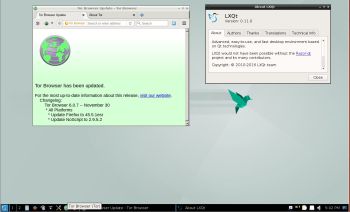 NEWS 161231 ABOUT Exton|OS with Mate 1.16.0 and Refracta Tools
NEWS 161231 ABOUT Exton|OS with Mate 1.16.0 and Refracta Tools
The Desktop Environment is Mate 1.16 (A fork of GNOME 2. It provides an intuitive and attractive desktop environment using traditional metaphors for Linux and other Unix-like operating systems). Program content in build 161231: Refracta Tools, Firefox, Google Chrome (for Netflix), Gimp, Vlc and GParted. Also all necessary additions in order to install programs from source. All packages have been updated to the latest available version as at December 31, 2016. Study the NEW PACKAGE list.
WHAT’S NEW in MATE 1.16?
IMPORTANT ABOUT REFRACTA TOOLS
Refracta tools are pre-installed in Exton|OS Mate Build 161231. Use them to create your own live installable Ubuntu system. I mean create your own installable Ubuntu 16.10 Live DVD once you have installed Exton|OS to hard drive. I mean change everything and then create a whole new Ubuntu live system. Start Refracta from Applications >> System Tools >> Refracta Snapshot. You don’t even have to install Exton|OS to hard drive before you can use the Refracta tools. If you have plenty of RAM you can create a new (your own!) Ubuntu system while running Exton|OS from DVD or a USB stick. Please note that the whole Refracta process (creating your new ISO) will only take 5 – 10 min! You’ll find the ISO in /home/snapshots. The whole thing is very simple. Refracta Installer replaces Ubiquity (Ubuntu’s installer). Refracta Installer is also very simple to use. No “expert knowledge” is needed.
Exton|OS build 161231 is based on Ubuntu 16.10 64 bit and Debian Stretch/Sid (upcoming Debian 9). Exton|OS’s ISO file is a ISO-hybrid, which means that it can very easily be transferred (copied) to a USB pen drive. You can even run Exton|OS from a USB stick and save all your system changes on the stick. I.e. you will enjoy persistence! Read my INSTRUCTION. For persistence please read under B) or use UNetbootin in Windows or Linux.
SCREENSHOTS
Screenshot 1 of Exton|OS’s Mate Desktop
Screenshot 2 of Exton|OS’s Mate Desktop running Spotify
Screenshot 3 of Exton|OS’s Mate Desktop running Refracta Snapshot






